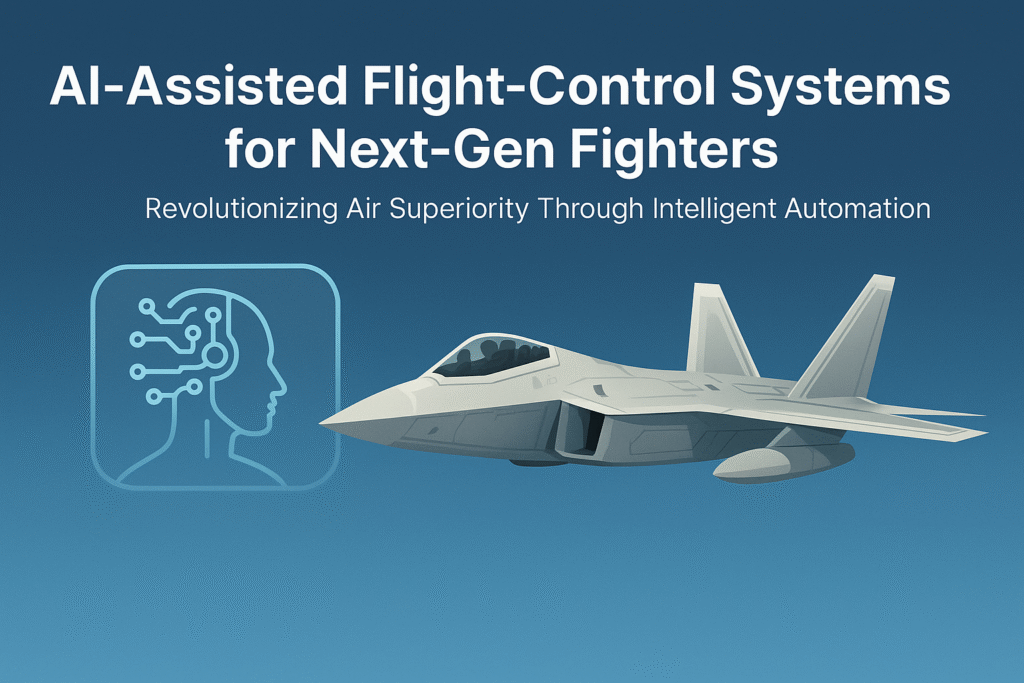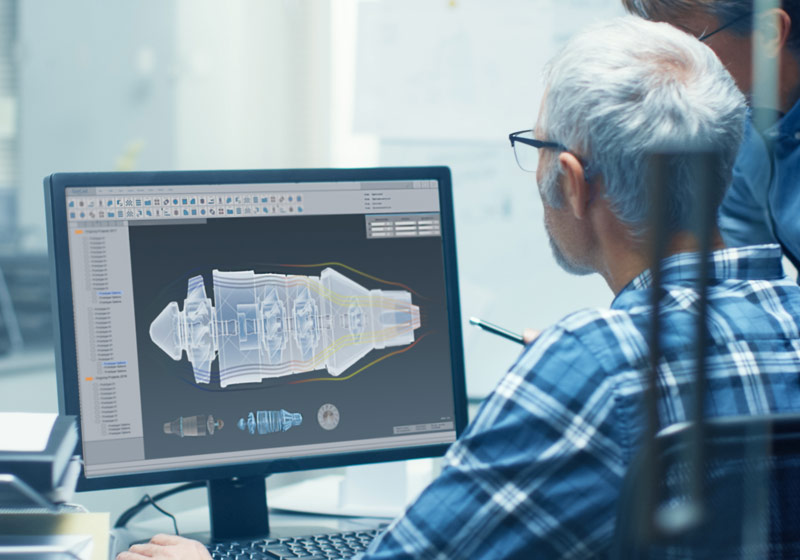The Future of Air Dominance Is Intelligent
In modern warfare, the edge no longer lies only in airframe design or firepower — it lies in intelligence. As sixth-generation fighter programs such as the USAF’s NGAD and the UK’s Tempest push aerospace innovation forward, AI-assisted flight-control systems are redefining what air superiority means.
These intelligent systems process terabytes of flight data in real-time, anticipate system anomalies before they occur, and make split-second decisions in complex combat scenarios — reducing pilot workload and increasing mission survivability.
Executive Summary
- 40% reduction in pilot workload through intelligent automation
- 85% of control surface failures prevented before occurrence via predictive algorithms
- Faster mission response through AI-driven real-time decision making
- Enhanced survivability in high-threat, multi-domain environments
Reading Time: 8 minutes
The Evolution of Flight Control Systems
From mechanical linkages to fly-by-wire, flight control technology has evolved dramatically. The F-16 introduced relaxed static stability, and the F-22 integrated vector thrusting — but these systems remain reactive, bound by pre-defined conditions.
AI changes this. Instead of relying on static logic, AI-assisted systems learn dynamically, predicting outcomes, adjusting control laws, and optimizing flight performance in conditions no pilot or engineer could predefine.
How AI Transforms Fighter Control Architecture
- Machine Learning at Every Layer
AI integrates at multiple levels — from sensor fusion to predictive maintenance:
- Sensor Fusion: Neural networks combine radar, IMU, and air data to build real-time situational awareness.
- Adaptive Control Laws: Algorithms modify flight dynamics in response to mission changes or system degradation.
- Predictive Maintenance: AI predicts component failures weeks ahead, reducing downtime and mission risks.
- Real-Time Threat Response
AI enables decision-making in milliseconds, critical when facing high-G maneuvers or missile threats.
For instance, upon detecting an incoming missile, the system can autonomously execute the safest evasive maneuver, adjusting engine thrust and control surfaces faster than human reflexes.
Custom-Trained AI Agents for Flight Intelligence
Data-Driven Learning
Custom GPT-like agents are trained on vast datasets, including:
- Flight telemetry (engine, fuel, G-forces, atmosphere)
- Combat scenarios and formation data
- Maintenance and component life-cycle records
Learning Techniques
- Supervised Learning: Models replicate optimal pilot behavior from test missions.
- Reinforcement Learning: Simulated millions of hours in virtual combat environments.
- Transfer Learning: AI from one aircraft platform quickly adapts to another, cutting development time.
Predictive Maintenance and Failure Prevention
AI doesn’t just fly the jet — it keeps it mission-ready.
By analyzing actuator response patterns, hydraulic pressures, and aerodynamic performance, the system can detect minute anomalies before they become flight-critical.
- Actuator Health Monitoring: Detects wear and degradation weeks early.
- Aerodynamic Deviation Analysis: Identifies structural fatigue or battle damage in real time.
- Automated Maintenance Scheduling: Generates predictive work orders and optimizes spare parts logistics.
Real-World Implementations
F-35 Lightning II
The F-35’s Autonomic Logistics Information System (ALIS) pioneered AI-based fleet intelligence, reducing unscheduled maintenance by 30% and optimizing mission readiness across thousands of sorties.
Next-Gen Fighter Programs
- NGAD (US): Incorporates distributed AI nodes and predictive combat modeling.
- Tempest (UK): Features adaptive mission planning, AI sensor fusion, and cooperative engagement systems.
Operational and Economic Benefits
Enhanced Mission Effectiveness
AI increases aircraft availability by 15–20% while optimizing flight efficiency under stress.
Pilots report a 40% reduction in cognitive workload, allowing focus on tactics and situational awareness.
Reduced Maintenance Costs
Predictive AI reduces unplanned maintenance by 25–35% and extends component life cycles.
Automated analysis also minimizes training and support costs — improving long-term ROI.
Challenges and Mitigation Strategies
Technical Barriers
- Processing Power: Addressed via compact edge-AI processors optimized for real-time computation.
- ITAR Compliance: Data protection and air-gapped architectures ensure security.
- System Integration: Hybrid architectures maintain backward compatibility with legacy control systems.
Safety Assurance
- Redundant processors ensure continuous operation during hardware failure.
- Transparent human-machine interfaces give pilots full situational control.
- Rigorous DO-178C testing and certification validate every control logic path.
The Future: Cognitive and Cooperative Flight
Next-generation fighters will evolve from AI-assisted to AI-cooperative.
Emerging innovations include:
- Swarm Intelligence: Coordinated multi-aircraft operations across manned-unmanned fleets.
- Quantum-AI Optimization: Ultra-fast decision modeling for threat assessment.
- Cognitive EW Systems: Dynamic adaptation to jamming and electromagnetic threats in milliseconds.



